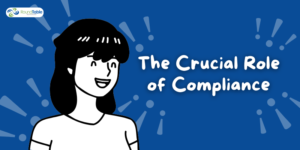In the unfolding chapters of the digital era, artificial intelligence (AI) isn’t just a fleeting trend—it’s becoming the backbone of many of our daily technological interactions. From smartphone voice assistants to advanced, predictive analytics, AI’s touch is everywhere.
At the heart of these technological waves stands tech behemoth Microsoft, ready to redefine our interactions with its newest revelation: CoPilot. But while this integration with Windows 11 offers unparalleled possibilities, there are intricate nuances and concerns nonprofits should be finely attuned to.
Microsoft CoPilot: The Everyday AI Companion
Before we venture further, let’s decode Microsoft’s CoPilot. As highlighted in their recent announcement, CoPilot is built with the intention to aid, guide, and eventually revolutionize the user’s digital journey.
The largest difference here between Microsoft CoPilot and other AI tools we’ve seen up to now is their integration with Windows 11, making it more widely available and easily accessible to users.
How exactly this tool will revolutionize the way we use AI is still yet to be seen, but this first foray into Operating Systems working in conjunction with AI is an exciting prospect.
Artificial Intelligence for the nonprofit world opens doors that perhaps we’ve only dreamed of. Consider an AI that doesn’t just assist but anticipates needs, offering profound insights into donor behavior, suggesting optimized routes for campaigns, and even assisting in mundane day-to-day tasks.
The Bounty of Benefits for Nonprofit Professionals
The advantages of AI integration into the nonprofit framework can be transformational. Let’s delve deeper into these potential game-changers:
Streamlined Operations: Nonprofits often juggle a myriad of tasks—organizing community events, managing volunteers, crafting outreach programs, and the list goes on. With AI, these could be seamlessly streamlined. Imagine an AI offering optimized templates for your next newsletter or suggesting the best time slots for community events based on historical data.
Unveiling Data’s Hidden Stories: Beyond mere data analytics lies the realm of data insights. Every donor interaction, every funding pattern, every campaign result is a story waiting to be told.
Empowering Through Automation: While automation might seem impersonal, especially in the mission-driven world of nonprofits, there’s no denying its efficacy. Routine tasks, especially those administrative in nature, can be handed over to AI. This not only ensures precision but also liberates human resources to focus on areas that truly need the human touch.
The Integration of AI in Operating Systems:
Navigating the Labyrinth of Risks
Innovation, while a driving force for progress, often comes with its set of challenges. Integrating AI at the very core of operating systems is a monumental shift, one that opens up channels, pipelines, and a vast expanse of data accessibility.
The most palpable concern echoing in many corridors is that of Data Disclosure. With an AI’s inherent capacity to sift through, analyze, and process immense data pools, the risk of sensitive data—be it donor information, financial details, or organizational strategies—being inadvertently accessed or disclosed becomes very real.
But the landscape of concerns isn’t just limited to data. AIs, while revolutionary, can sometimes perpetuate existing biases, leading to decision-making that might not align with a nonprofit’s ethos or values. And as we allow AI to take over more functions, there’s always the undercurrent of unforeseen ramifications—results or actions triggered by AI that might not have been anticipated.
Crafting a Robust AI Policy: The Nonnegotiable
These challenges underscore an undeniable truth: embracing AI isn’t merely about technological integration. It’s about weaving a fabric of responsibility, foresight, and ethics into this digital tapestry. Nonprofits, in their commitment to their mission and their stakeholders, must be the torchbearers of this responsible integration.
A well-constructed AI policy is the cornerstone. Such a policy would not be a rigid framework but a dynamic, evolving guide—encompassing governance protocols, setting ethical boundaries, and offering clear operational directives for AI deployment.
So what next?
It’s evident that the world of AI, especially with tools as powerful as CoPilot, offers a new frontier for nonprofits. But as we stand on this threshold, it’s crucial to be equipped—not just with tools, but with knowledge and strategy.
We urge nonprofits to embrace this era, but with eyes wide open. Speak with us and let’s collaboratively craft an AI policy that ensures your nonprofit’s journey into the AI realm is secure, ethical, and truly transformative.
Book a free 30 Minute Consultation to discuss how your organization can keep ahead of AI.
Conclusion
In the grand tapestry of technological evolution, Microsoft’s CoPilot might just be a thread, but it’s a thread that could change the pattern. It heralds promises, offers new vistas, but also comes with its set of challenges. For nonprofits, it’s time to not just watch the dawn but to step into it, armed with strategy, foresight, and a commitment to their mission. As we navigate this new era, let’s ensure that every step we take is both innovative and informed.




No comment yet, add your voice below!